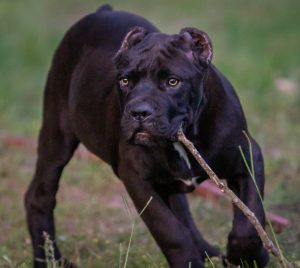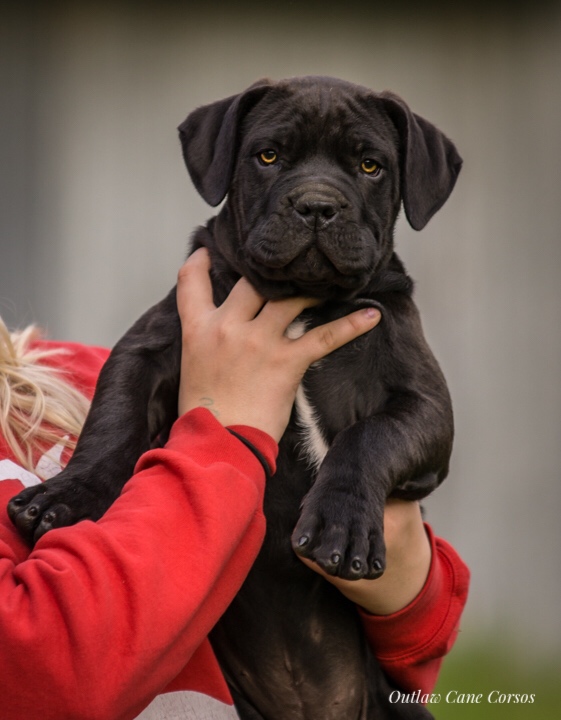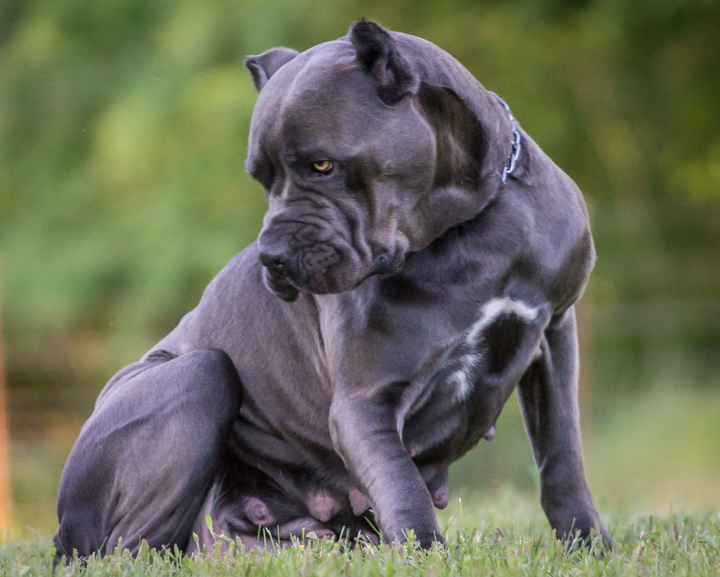Before you buy a puppy…..The truth about breeders
I say the following not to put any kennel down in any way but only to allow you to make an informed decision about breeders. You will never see me on any social media platform saying anything bad about any kennel whatsoever! This is a free country (thank a vet. lol) and everyone is allowed to breed dogs however they see fit… The Cane Corso breed was created, maintained and then resurfaced using the selective breeding process . This is a well documented fact. When I use the term “true breeder” I do not say it to put anyone who breeds dogs down in anyway. I am simply referring to the breeders that have the breeding knowledge to effectively affect the genetic makeup of an animal one way or the other on purpose. These are the ones that are responsible for all the different types of purebred dogs that we get to enjoy today.
Unlike some other countries the majority of Cane Corso breeders in the United States use the like to like breeding method. This means they take a good looking dog from one bloodline and cross it to a good looking dog from another and then hope for the best. While this seems logical at first site, this type of breeding is one of the least effective methods. If that’s a breeders preferred breeding method that’s fine. Just beware that this method scientifically speaking will ALWAYS give the lowest percentage of litter turnouts (the number of above average puppies in a litter) . Don’t get me wrong this method will produce occasional “toppers” (above avg. puppies) that excel in different areas. But the fact remains that the vast majority of all puppies produced will be very average. This is simply a scientific fact that can not be changed by any amount of hoping.
What some dishonest breeders don’t tell you about is the huge volume of dogs they go through to get the ones they present. Your chances of getting an above average dog may be very low. Which is ok it will just be an average representation of the type that’s already been set within the breed. Just be aware that no matter how it’s packaged, no matter how it’s presented by the breeder the end result will always be the same. Like to like breeding’s will always give the same results!
Some breeders will resort to using all types of methods to make their Dogs stand out above the rest solely for financial reasons. Some have their toppers compete in past time events and then campaign them and promote them. Dishonest breeders will lead you to believe most all of their puppies will turn out like those. Some resort to things like forced show contracts (in which you pay for a puppy but must show it in the ring so many times before you receive full ownership) in hopes others will promote their dogs for them. Some try to affiliate themselves with different organizations just to make themselves look more professional. Some resort to down right slander on the internet against others just to make themselves look better. This type of breeder may try to instill fear in others when trying to convince them about their dogs. The internet is full of propaganda that is spread by this type of breeder. The sad fact is many breeders breed purely for financial reasons and greed is the motivating factor. I’m not saying all breeders are bad many breeders have great hearts and the very best of intentions.
There are many true breeders out there but they may be a little harder to find sometimes. A true breeder will most always be one that works a “line” or “bloodline” (only a specific group of dogs within a breed). They do this because this is the only way to isolate and effectively enhance the genetic make up of an animal. This breeder will be breeding for a set of very specific goals. Not just for the general production of animals. This type of breeder usually takes a great amount of pride in the “line” they are working. This breeder may participate in the pastime events or they may not . Either way True breeders created the Cane Corso, True breeders reintroduced the Cane Corso and it will be True breeders that maintain and enhance the Cane Corso for any type of “Betterment of the Breed”.
(link) A.K.C. Multi-Group Show Judge E. Kattie Gammell Dog breeders vs. breeders of dogs. A brief explanation of the selective breeding processes used by True Breeders
(Wikipedia, selective breeding, history
Co-own puppies
Always check to see if the breeding rights are being restricted when you purchase a puppy. Many people purchase a puppy only to find out at a later date that they cannot breed the dog unless they split the litters with the original breeder or purchase the breeding rights for an additional $1,000 – $1,500. If the breeding rights have been restricted it means the breeder still owns those rights and you must enter some type of financial agreement with them if you wish to breed that dog (for whatever reason) at a later date. At that point you will have no say in the matter. The additional price or type of arrangement will be totally up to the breeder. Most breeders only restrict the breeding rights on puppies that have a known fault and should not be bred. Always check!
Some breeders only sell their puppies with restricted breeding rights or as co-owns. They may insist that you need some type of “mentor” for your dog. Although most reputable breeders will gladly give mentoring advice for free.
There is no standard for co-owns. Each breeder makes up thier own agreements, some of which greatly benefit the breeder. Remember co-owns are a business agreement.
Be aware of the fact that this type of arrangement doesn’t always turn out for the best. Co ownership disputes are the no. 1 type of disputes within the AKC registry. I would always insist on some type of written legal agreement.
Always take your time to fully research all the pros and cons of this type of breeder agreement.
I would always look for a breeder that makes this type of business arrangement optional never mandatory. It should be your choice.
I personally do not have any co-owns , If I did it would mean that i would have to continually travel all over the country in order to temperament test dogs for potential breeding stock. If a breeder owns 30-70 dogs at their kennel and 500 or more that are spread all over the country. Chances are these dogs are not going through any type of temperament testing at all before being incorporated into that breeders breeding program and sold under that kennels name.
Hip dysplasia and OFA testing.
Hip dysplasia is the medical term for a hip socket that doesn’t fully cover the ball portion of the upper thighbone. This allows the hip joint to become partially or completely dislocated.
The exact causes are still not fully understood by scientists at this time. But they have determined that it can be caused by either environmental or genetic factors. The environmental factors that can cause hip dysplasia pertain to things like a dogs weight, nutrition , amount of exercise, the surface on which the dog is raised etc. But there is a genetic component that can cause hip dysplasia as well. It’s the exact genetic component that’s still not fully understood by scientists. It may be a single gene or some combination of genes.
The genetic causes are not as high as some people think. Many test show the dogs genetics are only responsible for 15%-40% of hip dysplasia. So a great many cases of this disorder are environmental.
When using the OFA screening protocol. A breeder uses an X-ray in combination with an examination of the dogs history (blood line) to determine
If a certain dog may have genetic predisposition to hip dysplasia.
When the OFA scores a hip X-ray they are judging the laxity (looseness) of the hip for one particular dog. Joint Laxity is the determining factor that predisposes a dog to the development of hip dysplasia. Excessive laxity could be the result of traumatic injury, overloading of the joint by weight, lack of muscle strength, or adductor forces (e.g., bringing the legs together). But it could also be caused by a dogs genetics .
After a breeder receives an X-ray result that shows a poor score they then look at the test results of the of the parents grandparents and their offspring (the vertical pedigree) of the dog to see if there is a constant pattern of results that might help determine if they are dealing with a genetic component vs an environmental one for the dog affected.
The OFA test score only determines the laxity (looseness) of the hip. It is the breeders responsibility to determine if it’s caused by an environmental or genetic factor. The only way a breeder can determine if it is environmental vs. genetic is to compare it to the testing results of the parents, grand parents and their offspring (the vertical pedigree). Their must be a substantial database to compare the OFA score to that allows the breeder to look for patterns of consistency that can help in this determination one way or the other. If there is a pattern of poor results in the vertical pedigree that would be a good indication of genetic components.
Ok here is where it gets tricky Lol. If your a breeder that has a dog with a fair – poor OFA score, that dog may still be a good breeding candidate. How is this? Ok say you have a dog that has a poor OFA score but upon the examination of the dogs vertical pedigree (parents, grandparents and all siblings) you see there is no evidence of hip dysplasia or poor scores whatsoever. Then chances are the dog in question suffers from an environmental cause of possible hip dysplasia not a genetic one at all. This means the cause (environmental) of his poor score and possibility of hip dysplasia will not be past on to further generations. The vice versa is also true. If your a breeder that has a dog with a good OFA score but upon examination of the vertical pedigree there is a strong pattern of hip dysplasia and poor scores that dog will still not be a good breeding candidate simply because the chance of genetic issues are still strongly present.
Also keep in mind that poor laxity of the joint may present itself at different ages of a dogs life, not just when the dog is scored.
My point to all of the above is that the vertical pedigree is the vital part of the OFA protocol! It’s the basis upon which all decisions are made. Without it accurate assessments cannot be made one way or the other. The vertical pedigree must contain testing results from all the parents, grandparents and the siblings produced .
Now for the elephant in the room…..How to get the vertical pedigree necessary for any type of assessment?
This where the OFA protocol falls short in terms of practical use. The problem is that breeders simply do not have the testing results of the dogs needed in the vertical pedigree for it to work. Many breeders have tried to develop the needed data base for the OFA protocol to work. The problem is that the breeder needs the puppies sold from the litters to be tested at 2 years old and the results sent to the breeder so they can develop the needed database. The vast majority of people that purchase puppies would not follow through with this. Their have have been breeders that have tried diligently to offer various types of incentive programs etc. for new puppy owners to follow through with in hopes of increasing customer compliance.
But actual customer compliance still turns out very poor in most cases.
So if a breeder ever claims to use the OFA protocol and has the test results of their dogs ALWAYS ask to see evidence of the vertical pedigree they used to base their breeding decisions on. If they don’t know what your talking about or do not have any such database you can be rest assured the results will in no way be accurate.
The Cane Corso is a newer breed to the United States and many novice breeders though well intentioned do not understand how this protocol works. While there are other more experienced breeders that know exactly how it works and claim to “Health Test” their dogs. But could care less about actually doing it in a way that may be of any actual benefit to the breed whatsoever. Sadly for some breeders greed is the motivating factor.
Some breeders may be tempted to adopt the ” well something is better than nothing ” approach. As you see it’s not! It will only lead to the breeding of dogs that shouldn’t be bred.
According to the Canine Institute of Biology : “Researchers have been working hard for decades looking for solutions, and breeders have been doing their best to reduce the risk of producing affected puppies. But still the problem remains.” “Genetic selection should continue to produce modest progress in the reduction of hip dysplasia”
This is something many breeders have know for years. This is why we use selective breeding and genetic manipulation in attempts to rid our bloodline of any unwanted diseases. It’s a powerful method that’s time tested and effective.
In fact during the reconstruction process of the Cane Corso breed there was a serious problem with hip dysplasia in which the selective breeding process was used to bring it down to a very acceptable level.
www.offa.org The OFA Testing Protocol
The Institute of Canine Biology : The 10 most important things to know about hip dysplasia




